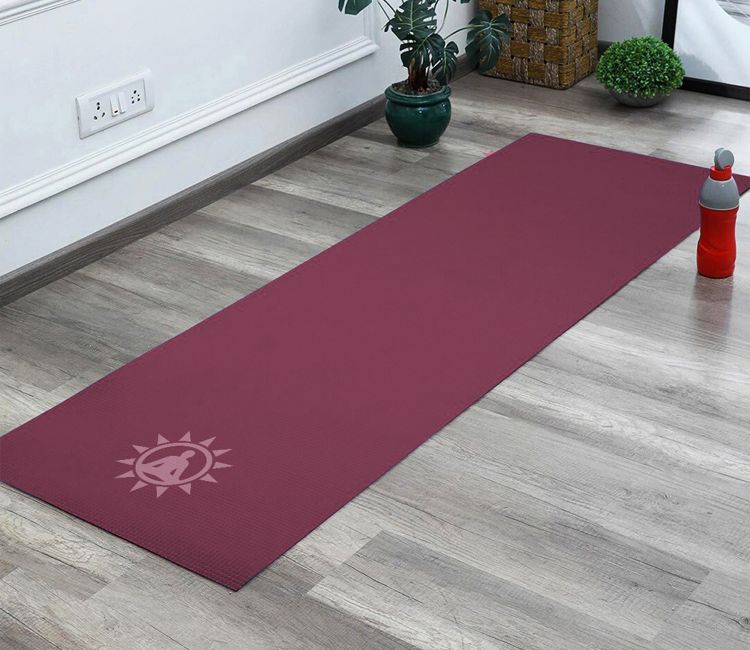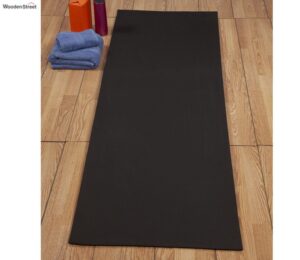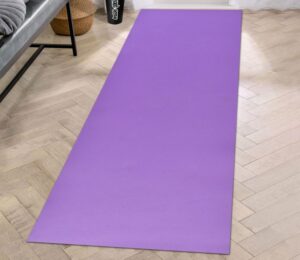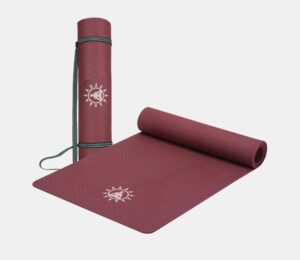
Choosing the right yoga mat can significantly improve your practice. With so many options available, it can be overwhelming to find the perfect one that suits your needs. Whether you’re a beginner or a seasoned yogi, this guide will help you understand what to look for when selecting the best yoga mat.
Consider the Thickness of the Mat
The thickness of a yoga mat plays a crucial role in providing comfort and stability during your practice. Here’s a quick breakdown of the common thickness options and their benefits:
- Thin Mats (1/16 inch or 1.5 mm): Ideal for travel or practices that require more balance and stability, like power yoga or hot yoga. These mats allow for a stronger connection to the floor, enhancing balance.
- Standard Mats (1/8 inch or 3 mm): These are the most popular choice and work well for a variety of yoga styles. They provide a balance between cushioning and stability, making them great for both beginners and experienced practitioners.
- Thick Mats (1/4 inch or 6 mm and above): Suitable for restorative yoga, gentle yoga, or for those who need extra cushioning for their joints. If you have sensitive knees or wrists, a thicker mat can offer more support.
Choosing the right thickness depends on your comfort level and the type of yoga you practice. If you’re frequently on the go, a thinner mat that’s easy to carry might be your best bet.

Material Matters: Understanding the Different Types
Yoga mats are made from various materials, and the type you choose can affect the mat’s durability, grip, and eco-friendliness:
- PVC (Polyvinyl Chloride): These mats are durable, affordable, and provide excellent grip. However, they are not the most environmentally friendly option. If sustainability is a concern, you might want to look for alternatives.
- TPE (Thermoplastic Elastomer): TPE mats are a popular choice because they are eco-friendly and recyclable. They offer a good grip and cushioning while being less harmful to the environment.
- Natural Rubber: Mats made from natural rubber provide excellent grip and are a great choice for eco-conscious yogis. They are biodegradable and free from toxic chemicals but may not be suitable for those with latex allergies.
- Cotton and Jute: If you prefer a natural feel, cotton and jute mats are great options. They offer decent traction and are highly breathable, making them ideal for hot yoga sessions.
Choosing the right material not only impacts your comfort but also the environment, so it’s worth considering a more sustainable option if possible.

Grip and Texture: Essential for Stability
The grip of a yoga mat is crucial for maintaining stability during poses, especially in styles like Vinyasa or Ashtanga yoga, where you move quickly between poses. Here’s what to look for:
- Smooth Mats: A smooth mat provides a comfortable surface but may become slippery if your hands or feet start to sweat. These mats are ideal for slower-paced yoga styles or practices where you don’t sweat as much.
- Textured Mats: If you practice hot yoga or tend to sweat a lot, a textured mat offers better traction and grip, preventing slips during your poses.
Testing the mat’s grip before purchasing can help you find one that offers the right amount of stickiness for your practice.
Size and Portability
Standard yoga mats are typically around 68 inches long and 24 inches wide, which is suitable for most people. However, if you’re taller than average, look for a longer mat to ensure that your entire body fits comfortably during stretches.
Portability is another factor to consider if you travel frequently or attend classes outside of your home. Look for a mat that is lightweight and comes with a carrying strap or a travel bag.

Budget Considerations
Yoga mats come in a wide range of prices, from budget-friendly options to high-end models. While a higher price doesn’t always guarantee better quality, investing in a durable mat can save you money in the long run. Look for mats that balance price, quality, and features that meet your needs.
Conclusion
Choosing the furnishing product yoga mat is a personal decision that depends on your practice style, comfort preferences, and lifestyle. Consider factors like thickness, material, grip, and size to find a mat that enhances your yoga experience. Whether you’re looking for a mat that provides extra cushioning for your joints or one that’s easy to carry on the go, there’s a perfect mat out there for you.






